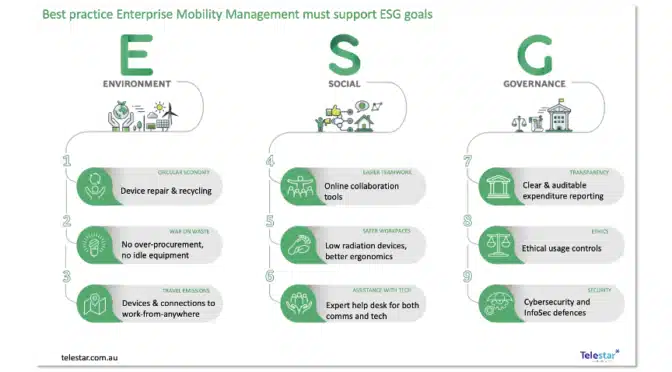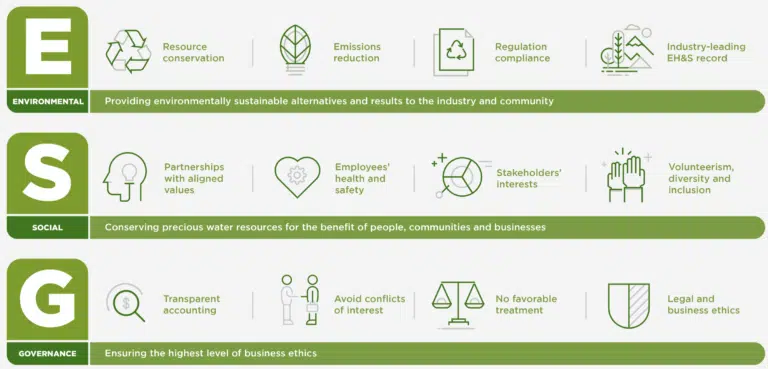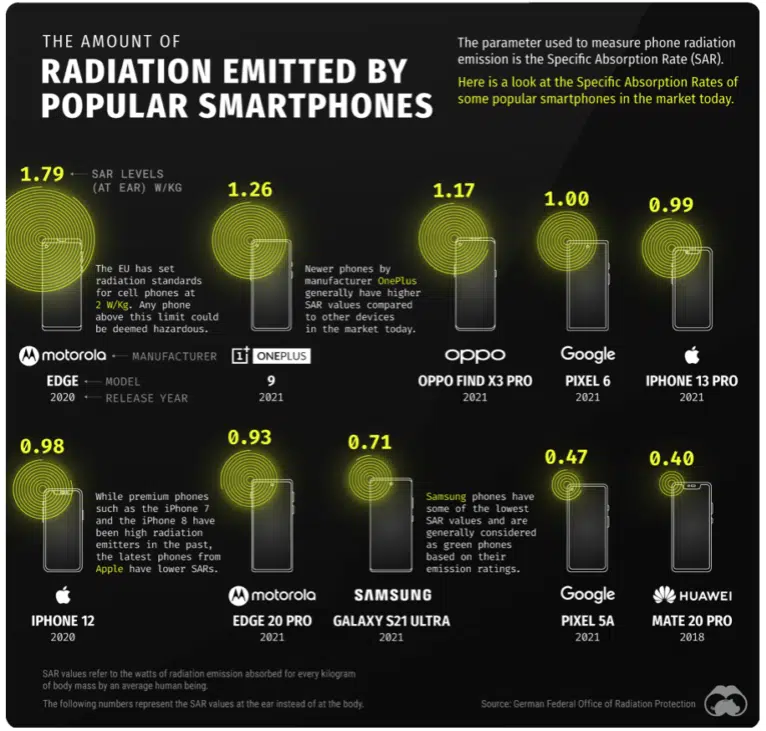
How should a socially responsible organisation handle its mobile IT and telecoms?
In 2022, it is no longer enough for a government agency to only meet its operational charter, nor for a commercial enterprise to simply maximise profit.
It is increasingly expected by the community that organisations will also act with social responsibility.
But as organisations had to adapt suddenly and unexpectedly to an unplugged and work-from-anywhere working culture due to COVID, social responsibility often got forgotten. For many organisations, the move to hybrid or remote work was considered purely in financial terms:

Now, leading government departments are circling back to re-assess their work mobility, and the IT and services that support it, against their social responsibility goals.
ESG Principles
Many organisations set themselves specific goals in Environment, Social and Governance (ESG) areas that are aimed at improving their behaviour as responsible and ethical entities within society.
If you’re in a government agency or department, the chances are that you have mandated ESG goals that are non-negotiable. Non-profit independent certifiers like B Corp are common in government, and meeting and maintaining certification requires ESG awareness at all levels.
A typical ESG framework covers key areas of operations, with proposed measurement methods for each:

Mobile IT in Enterprises
How organisations manage their mobile IT and telecoms varies greatly, but a trend is clearly emerging.
Today, over 80% of Fortune 500 companies use specialist providers to manage their mobile ICT devices and services.
The area is not core business, but it is critical to operations, and requires mobility-specific skills rather than general IT operation skills. As a result, using specialist providers delivers both efficiency benefits and savings.
Mobility management providers manage both the physical technology devices that your people use, like smartphones, tablets, laptops, wearables, mobile routers and IoT, as well as the related connectivity services, like telecoms connections, SIM and eSIM, and complex plans and options.
They also automate the business processes and rules associated with procuring and approving new services and devices, as well as deploying and running management systems such as Unified Endpoint Management, cybersecurity and cost control modules.
The entire field is tracked and reported on at a management level, and optimised for efficiency and savings on an ongoing basis.
All of this offers great benefits, but how does this map to an organisation’s ESG targets?
What can and should you expect from a mobility management provider to support ESG goals?
ESG Mobile IT Checklist
Here are some of the ways that Mobile IT providers are addressing ESG goals.
How does your organisation’s Mobile IT stack up against this checklist?

Mobile technology devices use many limited natural resources in their construction, many of which are also detrimental the environment if not recycled. Make sure your Enterprise Mobility Management provider offers repair services for broken or damaged devices. Most importantly, ensure that certified device recycling is part of your supplier’s device lifecycle management.

“That new hire starting tomorrow needs a phone, so send someone to the phone shop to get one.” Over-procurement of mobile devices is rife in large organisations. Its flip-side, unused devices left in drawers from long-gone employees, is equally wasteful and unnecessary. Check that your provider has structured systems to enforce procurement processes, as well as continuous fleet audit capabilities to identify and recoup idle devices.
For many businesses, the largest part of their carbon footprint is the transportation emissions from their employees commuting to work. Organisations that are committed to emissions reduction enable Work-From-Anywhere with appropriate technology. This can include not only phones and laptops, but also the right telecoms connections to keep staff productive.
Facilitating effective teamwork is a key social goal which technology can help with, but only when deployed and managed intelligently. Collaboration tools such as Teams, Zoom and Slack, along with their IP calling systems such as MS Office Calling, Google Meet and Zoom Phone, all help to make remote teamwork smooth and engaging, improving both efficiency and reduce worker isolation and loneliness at work.
For organisations, assisting with safe workplaces for remote employees is complex, but there are positive things that can be done. The most common cause of home workplace injury is poor ergonomics, including posture issues from hunching over laptops, eye strain from poor visual environments and hearing difficulties from strained audio lines. But there are other considerations too, such as equipment radiation levels, which may have a long-term effect on employee amenity. Employers can make a positive difference with the right technology advice and the right accessories. Check that your provider supports and delivers peripherals such as external display screens, headphones and trackpads as part of their Device Management Lifecycle, and can can provide radiation data for all devices procured.


The feeling of isolation for remote workers can be made worse by technology frustrations. Providing specific and human-based support for technical issues is a critical part of helping a remote workforce stay positive and productive. Check that your provider offers expert support, using real-time humans, for both connectivity issues and device issues together.
Many organisations have limited visibility of the real nature of their telecommunications operations, resulting in waste and opportunities for fraud. Good telecoms management providers deliver detailed and timely reporting on all aspects of telecoms use, devices, connections and spend, enhancing both cost control and transparency.
Allowing company devices and connections to be used for inappropriate purposes is not only a breach of governance principles, it can also be criminal in some situations. There are many tools to reduce this risk, but they require expert configuration and deployment, and ongoing management. True end-to-end Enterprise Mobility Management providers will have baked into their services the configuration and deployment of Unified Endpoint Management software to suit your organisation’s specific policies, as well as providing the ongoing management, monitoring and reporting of usage.
Off-premises and mobile operations are often seen as the weak point in cybersecurity. Good governance requires organisations to take mobile security seriously. Check that your Enterprise Mobility Management provider integrates device enrolment, Mobile Threat Defence, usage exception reporting, encryption and VPNs as standard within their Device Lifecycle Management services.
To discuss how outsourcing the management of mobile IT and telecoms can help your organisation meet its ESG goals, contact Telestar Communications.
ESG Glossary
B Corp.: A certification provided by the nonprofit B Lab, indicating that a company meets high social and environmental criteria standards, while exhibiting public transparency and committing to legal accountability. Companies go through a rigorous assessment process to be registered and then undergo a verification process every three years to be re-certified.
Carbon offset: An action that reduces carbon-dioxide or other greenhouse gases to compensate for emissions made elsewhere, helping companies meet their climate-driven goals.
Carbon footprint: A measure of greenhouse gases generated by a person, product or company’s actions.
Carbon neutral: When a company has acquired enough carbon offsets to equal its operational emissions over a determined time frame.
Circular economy: A term for supply-chain and consumption strategies focused on recycling and reusing.
Climate shareholder resolutions: Proposals from corporate shareholders aimed at pushing management to implement more environmentally friendly policies and procedures.
Community development investing: Investment options from community development corporations and other organisations intended to generate new opportunities that help lower-income neighbourhoods and populations. Such investments generally are related to affordable housing, small businesses and jobs.
Conscious capitalism: A philosophy that states businesses pursuing profits should operate in an ethical manner.
Corporate Social Responsibility (CSR): The concept that a company’s value proposition goes beyond profit, to include things such as societal impact, as well as the company’s culture and mission.
Decarbonization: The reduction of carbon-dioxide emissions, which is deemed critical for improving air quality and global temperature.
Divestment: The reducing or dumping of assets to serve financial, ethical or political objectives.
Energy storage: Capturing energy for later use to reduce disparities between demand and production.
EEO diversity disclosures: In the US, private companies with 100 or more employees for decades have had to disclose to the U.S. Equal Employment Opportunity Commission how many men and women of different ethnicities they employ across 10 job categories. Investors increasingly are pushing companies to make these disclosures public, with similar initiatives emerging in other countries.
Green bond: A fixed-income investment that supports climate or environmental-related projects.
Greenwashing: When companies and investment funds give misleading claims about their ESG credentials or how environmentally friendly their products are. Some regulators are asking whether fund managers should disclose details about the criteria and underlying data they use to define their so-called ESG investments.
Negative, or exclusionary, screening: An investment approach that seeks to avoid certain companies or sectors that engage in activities that are frowned upon or considered controversial. So-called sin stocks—such as adult entertainment, tobacco or gambling —are among those investors often seek to avoid.
Net zero: When the amount of greenhouse gas emitted into the atmosphere equals the amount that is taken from the atmosphere. Similar to carbon neutral, the term refers to all greenhouse gases.
PET plastic: Shorthand for polyethylene terephthalate, which is a member of the polyester family. PET bottles are favoured by some environmentalists and manufacturers over glass. They are seen as more durable, clear and lightweight—and they can be easily recycled into useful everyday items.
Public-benefit corporation: A type of for-profit company created to benefit the public in some way. Boards of such corporations are required to consider environmental and social factors, as well as shareholders’ financial interests.
Positive screening: An investing approach that actively seeks to invest in companies, industries or sectors that align with certain objectives and ethical proclivities.
Renewable energy: Energy obtained from ongoing natural sources that are constantly replenished, such as wind or solar.
Scope 1, 2 and 3: Three types of emissions, as defined by the Greenhouse Gas Protocol, which works with governments, industry associations and businesses to set standards to measure and manage emissions. Scope 1 (direct greenhouse-gas emissions) and Scope 2 (indirect emissions resulting from the energy that a company purchases) are required reporting for many businesses. Scope 3 (greenhouse gases related to a company’s products that fall outside its direct operational control) fall under an optional reporting category.
Stranded asset: An investment that has lost value prematurely due to environmental factors, such as climate change.
Sustainable aviation fuel: SAF is a clean replacement for fossil jet fuels. Airlines are increasingly experimenting with SAF to help them achieve emissions-reduction goals.
Sustainability-linked bond: A type of ESG-friendly bond tied to sustainability targets.
Triple bottom line: A business concept that says companies should commit tocalculating their social and environmental impact, along with financial performance.
Voluntary carbon market: A mechanism that allows private investors, businesses, governments and others an option to purchase carbon offsets to reduce their net carbon emissions. This market operates alongside the mandatory carbon market, where national, regional or international authorities impose certain requirements.